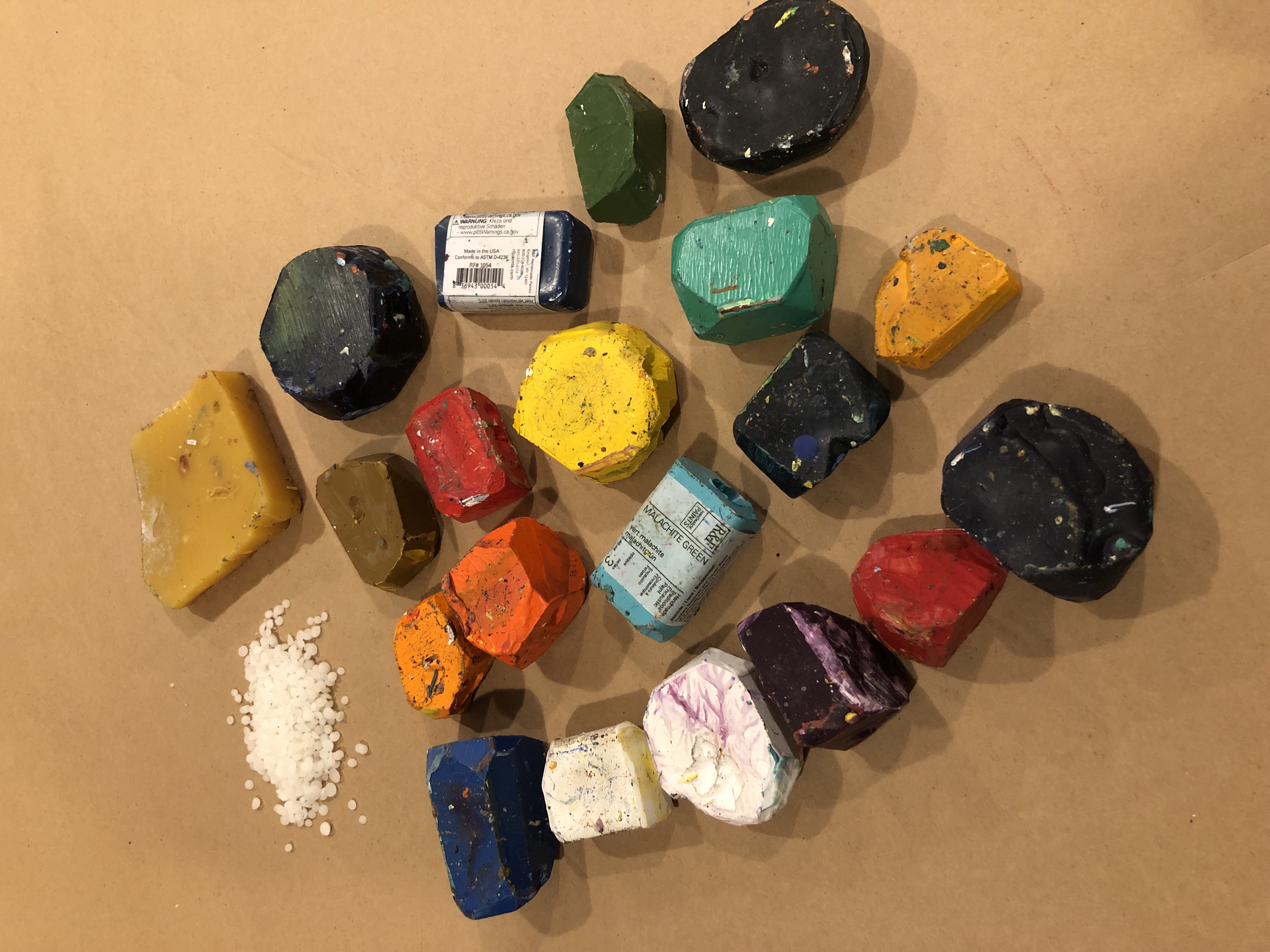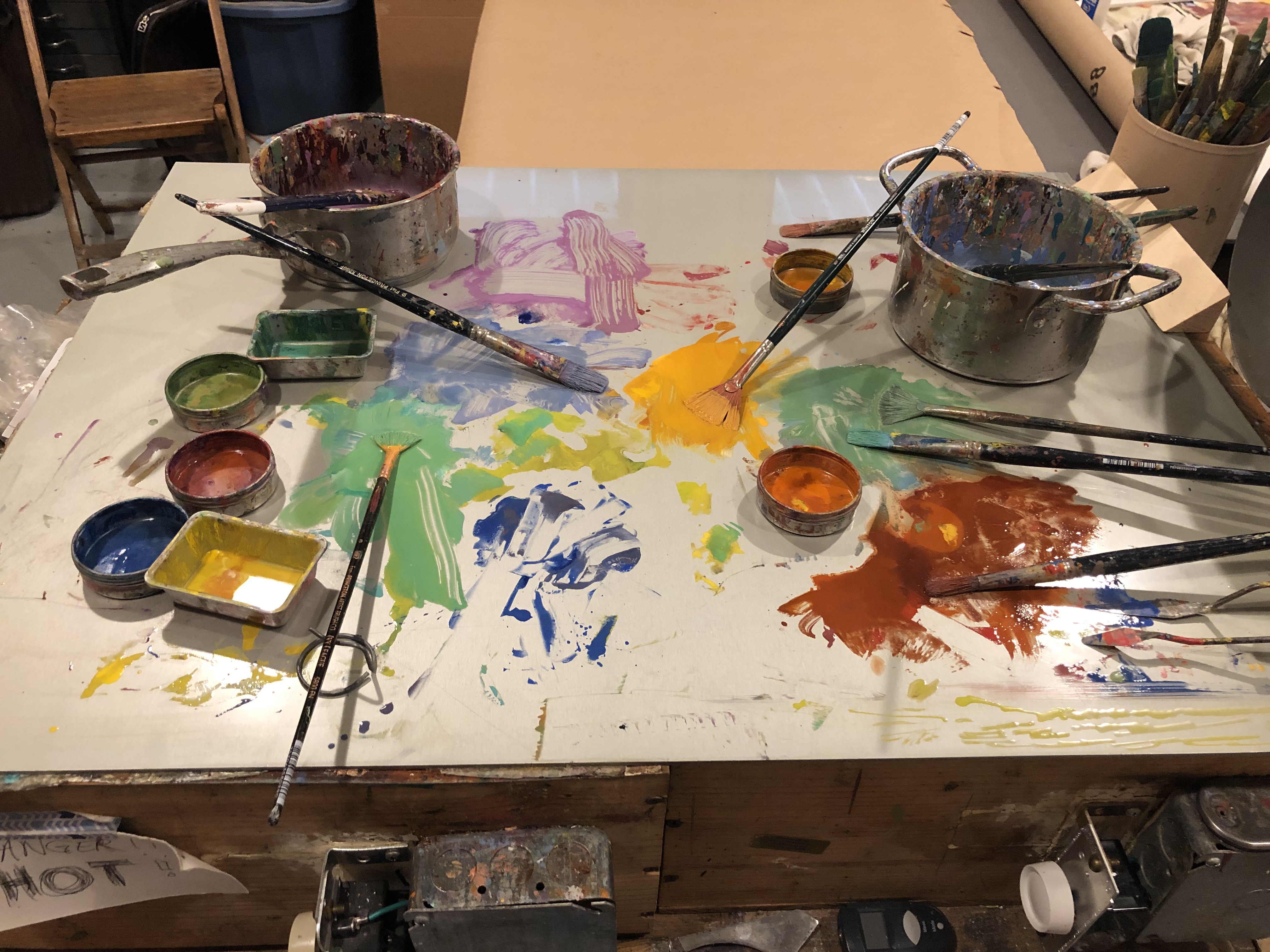About Encaustic
Encaustic painting is an ancient and highly permanent technique in
which the vehicle or binder is beeswax. Unlike linseed oil or synthetic
resin (e.g. acrylic) binders which dry to harden, the beeswax is heated
until molten, mixed with dry pigments to make paint, and, when applied
to the painting, cools and hardens instantly. When the painting is
completed, the entire surface is reheated to fuse the layers and bond
them to the support. This is called burning-in, which is the literal
meaning of encaustic.
Although the surface is not as tough as an oil film, encaustic
paintings do not darken or yellow with age. Portraits made in the Fayoum
district of Egypt as early as the 1st century A.D. are as fresh as if
they were painted yesterday. The most famous contemporary painter to
revive the use of this technique is Jasper Johns. Some painters combine
wax with linseed oil binders; this is known as cold-wax encaustic.

encaustic paint
Encaustics should not be exposed to extremes of temperature; cold may make the surface brittle and extreme heat may cause the paint to soften or even melt. Yet encaustics are free from problems of moisture and atmospheric impurities that can damage oil and tempera paintings. When properly cared for encaustic paintings will remain unchanged for centuries. Sometimes when encaustic paintings are exposed to cold temperatures, a whitish “bloom” may appear on certain portions of the surface, caused by small amounts of moisture or impurities in the wax. This will disappear when the painting is “reheated” and can also be removed by a light touch from a warm finger.

Studio view with Vent-a-Fume for ventilation
History of Encaustic
INDEX ︎ ︎︎︎INDEX
